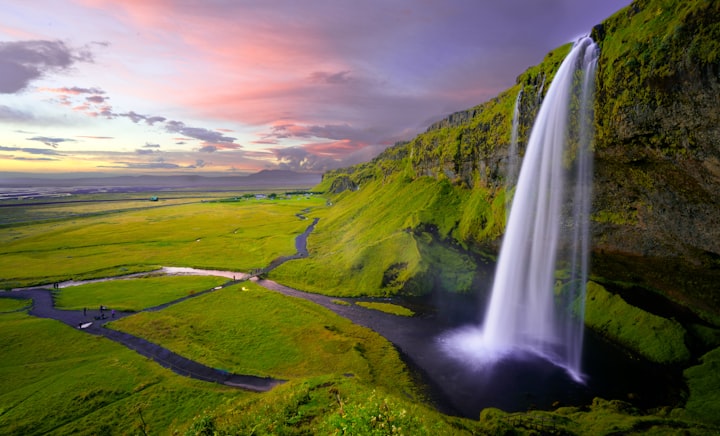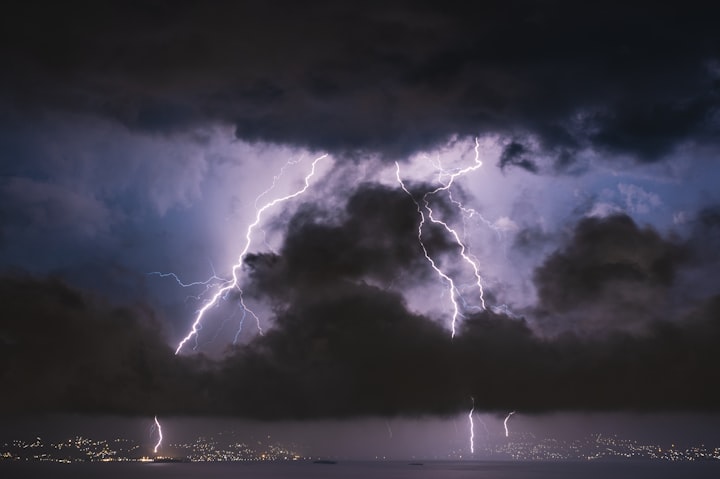World nature conservation day 2024
conservation day 2024

World Nature Conservation Day is an annual observance held on July 28th to raise awareness about the importance of preserving and protecting the natural environment. Established to promote global action towards conservation efforts, this day serves as a reminder of the urgent need to safeguard biodiversity, combat climate change, and promote sustainable practices for the well-being of present and future generations.
1. Origins and Significance:
World Nature Conservation Day traces its origins to the increasing recognition of environmental issues and the need for concerted action to address them. As the consequences of human activities on the planet became more apparent, initiatives aimed at conservation gained prominence, leading to the establishment of dedicated days such as World Nature Conservation Day.
2. Goals and Objectives:
The primary goal of World Nature Conservation Day is to raise awareness and foster a deeper appreciation for the natural world. By highlighting the value of biodiversity, ecosystems, and natural resources, the day aims to inspire individuals, communities, and governments to take proactive steps to protect and conserve the environment. This includes promoting sustainable development practices, preserving habitats, combating deforestation and habitat destruction, and reducing pollution and carbon emissions.
3. Theme for World Nature Conservation Day 2024:
Each year, World Nature Conservation Day may adopt a specific theme or focus area to guide its activities and initiatives. The theme for 2024 could revolve around urgent environmental challenges such as biodiversity loss, climate change, or habitat degradation. It may also emphasize the importance of collective action and global cooperation in addressing these issues effectively.
4. Importance of Nature Conservation:
Nature conservation is crucial for maintaining ecological balance, supporting biodiversity, and ensuring the health and well-being of both humans and wildlife. Healthy ecosystems provide essential services such as clean air and water, pollination of crops, regulation of climate patterns, and protection against natural disasters. Conservation efforts also contribute to sustainable development by promoting economic stability, social equity, and cultural preservation.
5. Threats to Nature and Biodiversity:
Despite the importance of conservation, the natural world faces numerous threats from human activities. Deforestation, habitat destruction, pollution, overexploitation of natural resources, and climate change are among the primary drivers of biodiversity loss and ecosystem degradation. These threats not only endanger wildlife and ecosystems but also jeopardize human health, livelihoods, and food security.
6. Conservation Strategies and Solutions:
Addressing the challenges of nature conservation requires a multi-faceted approach that integrates scientific knowledge, policy interventions, community engagement, and public awareness. Conservation strategies may include the establishment of protected areas, wildlife reserves, and marine sanctuaries; implementation of sustainable land-use practices; promotion of renewable energy and green technologies; adoption of eco-friendly lifestyles; and advocacy for stronger environmental regulations and enforcement mechanisms.
7. Role of Individuals and Communities:
Individuals play a critical role in nature conservation through their everyday choices and actions. Simple steps such as reducing waste, conserving energy, supporting sustainable products and businesses, practicing responsible tourism, and participating in local conservation initiatives can collectively make a significant difference. Communities can also mobilize collective efforts to protect natural habitats, restore degraded ecosystems, and promote environmental education and awareness.
8. Government Policies and International Cooperation:
Governments have a crucial responsibility to enact policies and legislation that promote conservation and environmental sustainability. This may include measures to protect endangered species, preserve critical habitats, regulate land use and development, promote renewable energy sources, and mitigate the impacts of climate change. International cooperation and collaboration are also essential for addressing global environmental challenges, fostering partnerships, sharing knowledge and resources, and implementing coordinated strategies at the global, regional, and national levels.
9. Celebrating World Nature Conservation Day:
World Nature Conservation Day provides an opportunity for individuals, organizations, and governments to come together and celebrate achievements in conservation, raise awareness about ongoing challenges, and inspire collective action. Activities may include tree planting drives, beach clean-ups, nature walks, educational workshops, film screenings, art exhibitions, and public campaigns on social media platforms. These events help foster a sense of stewardship and responsibility towards the environment and encourage people to become active participants in conservation efforts.
10. Conclusion:
World Nature Conservation Day serves as a timely reminder of the importance of protecting and preserving the natural world. In the face of mounting environmental challenges, it is imperative that we redouble our efforts to conserve biodiversity, mitigate climate change, and promote sustainable practices for the benefit of all living beings. By working together, we can create a more resilient and harmonious relationship with nature, ensuring a healthy planet for present and future generations to enjoy.
World Nature Conservation Day, including specific examples of conservation initiatives, the role of technology in conservation efforts, and the importance of education and awareness.
11. Conservation Success Stories:
World Nature Conservation Day provides an opportunity to celebrate and showcase successful conservation initiatives from around the world. These stories highlight the power of collective action and demonstrate that positive change is possible even in the face of daunting environmental challenges.
One example is the revival of endangered species populations through targeted conservation efforts. Projects such as the reintroduction of wolves in Yellowstone National Park in the United States or the conservation of giant pandas in China have shown significant progress in restoring threatened species to their natural habitats.
Similarly, community-led conservation projects have proven to be effective in preserving biodiversity and promoting sustainable livelihoods. For instance, initiatives that empower local communities to manage and protect natural resources, such as community-based marine conservation areas or indigenous-led forest management programs, have yielded promising results in safeguarding ecosystems and enhancing resilience to environmental threats.
12. Role of Technology in Conservation:
Advancements in technology have revolutionized conservation efforts, enabling scientists, researchers, and conservationists to monitor and manage natural resources more effectively. Remote sensing technologies, such as satellite imagery and drones, provide valuable data for mapping habitats, tracking changes in land use, and monitoring wildlife populations.
Additionally, the use of Geographic Information Systems (GIS) allows for spatial analysis and modeling to identify conservation priorities, plan protected areas, and assess the impact of human activities on ecosystems. DNA sequencing and molecular techniques have also become indispensable tools for studying genetic diversity, identifying species, and combating wildlife trafficking.
Furthermore, citizen science platforms and mobile applications engage the public in data collection, monitoring, and reporting of environmental observations, empowering individuals to contribute to conservation efforts in their local communities.
13. Education and Awareness:
Education and awareness are fundamental pillars of nature conservation, as they foster a deeper understanding of environmental issues and empower individuals to make informed choices that promote sustainability. World Nature Conservation Day provides an opportunity to promote environmental education and raise awareness about the importance of conservation among people of all ages.
Schools, universities, and educational institutions can organize workshops, lectures, and field trips to teach students about ecological principles, biodiversity conservation, and the impact of human activities on the environment. Environmental organizations and non-profits can collaborate with local communities to develop outreach programs, conduct environmental awareness campaigns, and organize public events that promote conservation values and behaviors.
Furthermore, digital media and social networking platforms offer powerful tools for disseminating information and engaging the public in conservation discourse. By harnessing the reach and influence of social media, conservation organizations can inspire advocacy, mobilize support for conservation initiatives, and foster a sense of environmental stewardship among a global audience.
14. Future Challenges and Opportunities:
Looking ahead, World Nature Conservation Day serves as a reminder of the ongoing challenges and opportunities in the field of conservation. Climate change, habitat loss, pollution, and biodiversity decline continue to pose significant threats to ecosystems and species worldwide, requiring urgent action at local, national, and international levels.
However, amid these challenges, there are also opportunities for innovation, collaboration, and positive change. Advances in science and technology, coupled with increased public awareness and engagement, offer new avenues for conservation efforts. By harnessing the collective wisdom and creativity of diverse stakeholders, we can develop innovative solutions, implement effective policies, and create a more sustainable future for all life on Earth.
15. Conclusion:
World Nature Conservation Day serves as a global platform for raising awareness, promoting action, and celebrating achievements in nature conservation. Through education, advocacy, and collaboration, we can work together to protect and preserve the natural world for current and future generations. By embracing a holistic approach to conservation that integrates science, technology, education, and community engagement, we can create a more harmonious relationship with nature and ensure a healthy planet for all living beings.
About the Creator
WILLIAM DIAGO RODRIGUES
Hi! Everyone out there I am a Online Enterpreneur love to create, write and ellaborate different niches and write different Articles to entertain and help to give and spread the knowledge which i can incalcate through different search Engin






Comments (1)
Thanks for sharing. I haven't known about it!